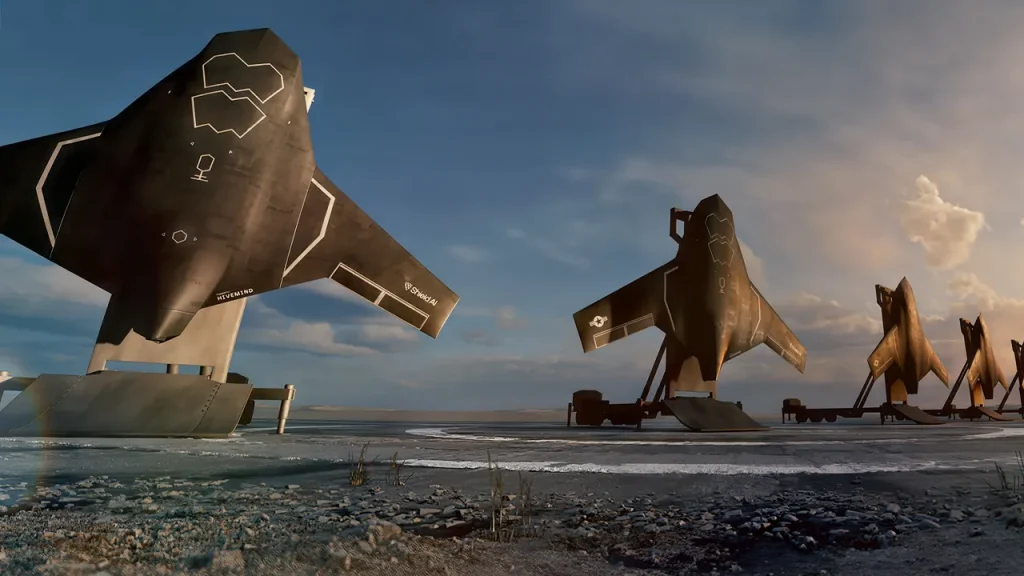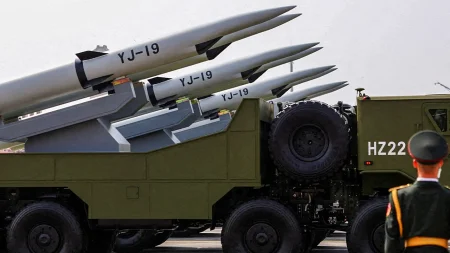China’s Anti-Aircraft Strategy and America’s AI Fighter Jet Response
In today’s rapidly evolving military landscape, China has developed what analysts describe as a chilling strategy for potential conflict with the United States: neutralizing American air power before it can even take flight. This approach follows a well-established pattern in modern warfare, where disabling enemy aircraft on the ground serves as a critical first strike. We’ve seen this tactic employed recently when Israel attacked Iranian nuclear facilities by first destroying runways, effectively grounding Tehran’s air force. Similar strategies have played out in the Russia-Ukraine war and India-Pakistan conflicts, where airfield strikes constituted opening salvos.
Beijing has internalized this lesson deeply, investing heavily in long-range precision missile technology specifically designed to target American military assets across the Pacific. The People’s Liberation Army’s arsenal includes so-called “carrier killers” like the DF-21D and DF-26 missiles, capable of striking U.S. aircraft carriers and airfields throughout the region. China’s strategic calculation appears straightforward: prevent American air power from entering the conflict zone by destroying it at its source. Rather than competing directly against U.S. stealth technology in air-to-air combat, China aims to eliminate these advanced aircraft while they remain vulnerable on runways – a cost-effective approach that exploits a fundamental weakness in traditional air power deployment.
In response to this emerging threat, San Diego-based defense technology firm Shield AI has unveiled a revolutionary solution: the X-BAT, an AI-piloted fighter jet designed specifically to counter China’s anti-access strategy. What makes this aircraft remarkable is its ability to operate without the traditional vulnerabilities that China’s strategy targets. The X-BAT requires no runways, can function without GPS navigation, and maintains operational capability even when communication links are jammed or severed. Perhaps most significantly, the aircraft incorporates an advanced autonomy system called Hivemind, enabling it to think, fly, and fight independently while still maintaining human oversight for critical decisions involving lethal force. “China has built this anti-access aerial denial bubble that holds our runways at risk,” explains Armor Harris, Shield AI’s senior vice president of aircraft engineering. “The way to solve that problem is mobility. You’re always moving around.”
The X-BAT’s technical specifications reflect its revolutionary design approach. The jet can take off vertically, reach altitudes of 50,000 feet, and cover distances exceeding 2,000 nautical miles on strike or air defense missions. Its compact footprint allows three X-BATs to occupy the space of a single legacy fighter or helicopter, dramatically increasing deployment flexibility from limited platforms like ships, small islands, or improvised sites inaccessible to conventional aircraft. The Hivemind autonomy system represents another quantum leap, enabling the X-BAT to operate effectively in denied or jammed electromagnetic environments where traditional aircraft would be essentially blind. This system uses onboard sensors to interpret surroundings, identify threats and targets, and adjust mission parameters in real-time without human micromanagement. “It’s reading and reacting to the situation around it,” Harris notes. “If new threats appear, it can reroute itself or identify targets and then ask a human for permission to engage.”
Shield AI projects the X-BAT will be combat-ready by 2029, delivering fifth or sixth-generation fighter performance at a fraction of the cost of manned alternatives. While specific pricing remains classified, the company indicates the aircraft will fall within the cost range established by the Air Force’s Collaborative Combat Aircraft program, which aims to develop autonomous “wingmen” for manned fighters. The economic model appears compelling, with Shield AI estimating the X-BAT will deliver approximately ten times the cost-effectiveness of legacy fifth-generation jets like the F-35 while remaining “affordable and attritable” enough to accept higher risk profiles in combat scenarios. This cost structure represents a fundamental shift away from the traditional fighter development model, where increasingly complex and expensive platforms limit production quantities and operational flexibility.
The X-BAT exemplifies a broader paradigm shift toward distributed airpower that parallels the revolution SpaceX brought to space operations. Harris draws this comparison directly: “Historically, the United States had a small number of extremely capable, extremely expensive satellites. Then you had SpaceX come along and put up hundreds of smaller, cheaper ones. The same thing is happening in air power.” This approach creates an asymmetric challenge for adversaries like China, who must now contend with air assets that can operate from unpredictable locations, in electronic warfare environments, and at scale due to their lower unit cost. While manned aircraft will remain essential components of future air forces, the trend points toward unmanned systems potentially outnumbering them by ten or twenty to one. Shield AI is currently in discussions with both the U.S. Air Force and Navy about integrating the X-BAT into future combat programs, as well as exploring joint development opportunities with several allied militaries. The ultimate goal extends beyond technological innovation to strategic deterrence – creating military capabilities flexible and resilient enough to make potential adversaries reconsider the viability of their own offensive strategies.













